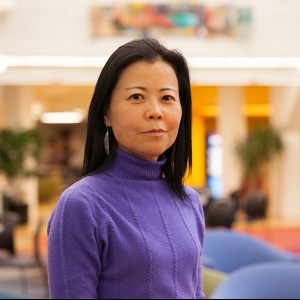March 2016 - April 2017
How can creative processes give voice to women in disaster-affected areas of northern Japan? What impact can such processes have upon the ability of those women to communicate the disasters’ impact on their lives, their communities, the overall societal response and the governmental policies that direct their lives? How do women piece together their lives, re-membering the fractured to become whole
again, thus developing a better awareness of themselves in community as well as changing the perspectives of residents and non-residents regarding their status and value within the society? How does performance evoke empathy and self-awareness for audience members and performers?
These questions are central to Dance Theater. PI (Wilson, Dance) has worked as a choreographer to create dance grounded in the lives of people, especially those who are socially marginalized, in the specific socio-cultural-historical context. This project seeks to generate movements and stories grounded in local history and context. The opportunity to do so with women in Japan and in post-disaster context for the first time will expand the scope of Wilson’s investigation substantively. As a choreographer, each new creative work is an investigation of a research question. Through the new venue and context, Wilson continues to create, and examine the role of, dance theater performances in documenting and expressing the lives of the marginalized.
This participatory action research project uses dance theatre as a means to document the impact of the 2011 Great East Japan Disasters (Earthquake, subsequent tsunami and nuclear crisis) on the lives of the local women and communities affected. This project builds upon their prior experience with the Yoshihama’s PhotoVoice project over the last five years, where the women took photographs of their
lives and communities and engaged in small group discussions (funded in part by CJS in 2011 and 2012). About fifty disaster-affected women living in Prefectures of Fukushima, Miyagi and Iwate, as well as those who have evacuated to Tokyo have participated since June 2011. This process provided space for analyzing and recording their lives following the disaster, and identifying community and societal
problems and issues, and formulating strategies to address them. In addition, the processes of photo-taking and group discussions have allowed the participants to identify and express their feelings, which in turn facilitates their healing and growth psychosocially. Thus far, they have disseminated their analysis via photographs and voices (written messages). Using the different modality of dance theatre will allow the women to deepen and expand such investigation, analysis and dissemination.
To our knowledge, this is a first attempt to use PhotoVoice as a primary source for generating dance theater work. Thus, additional questions to explore include: How does PhotoVoice inform the dance; how can dance theater “fill in the blanks” where photographs and captions leave off? This project will also expand on Yoshihama’s ongoing investigations of women’s experiences and community conditions in post-disaster Japan via PhotoVoice methodology. Use of dance, which transcends differences in language, will provide another vintage point to examine the lived experiences of women affected by the disaster. For example, this project will allow for the examination and expression of various forms of loss and destruction, many of which are invisible and unspeakable, e.g., fears about
the invisible radiation, people/things lost, and feelings hidden and suppressed.

